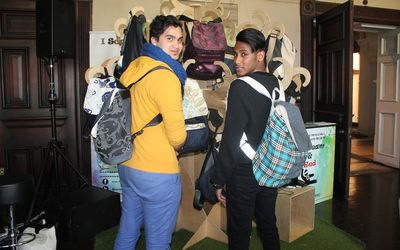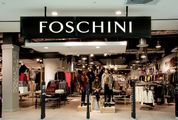IF you have been eyeing a new luxury car, even though yours is barely a year old, or yet another pair of imported shoes, give yourself a break. You may be displaying the worst of consumerist excess, but according to psychologists, it’s what humans are programmed to do: to consume as much as we can, and to display our most attractive traits and acquisitions to gain prestige and impress a mate.
The marketing industry tapped into this from the start, says evolutionary psychologist Geoffrey Miller in the documentary Consumed: Inside the Belly of the Beast (2011). The problem is that today, lured by irresistible products and brands, many people believe that flaunting their purchases can compensate for a perceived lack of social status, intelligence, creative talent or sense of humour.
The difference between humans and animals is that we can change our ideology; we’re a flexible species. And there is a growing consensus worldwide that our obsession with conspicuous consumption is a zero-sum game.
Behavioural scientist Warren Hern says our consumption is acting like a cancer.
"Ultimately, cancer kills the organism that supports it." The average Briton, it is believed, consumes as much as if there were ther resources of three planets were available.
Humans’ continuous need to create and grow has led to tremendous advancement, but evolutionary theorists interviewed for the documentary fear there has been a simultaneous detachment from the environment. There is a backlash against this, though; many people are questioning where the products they buy come from, and whether they really need something before they buy it. And although globalisation has led to more buyers, it has also spread the anticonsumerist cause, creating a loose conglomeration of people who are trying to slow the environmental damage.
...
TREND expert and founder of Flux Trends, Dion Chang, says a tipping point was reached after the 2008 economic meltdown, when people suffered enormous loss.
As they witnessed the devastation, he says, "people’s empathy chips were activated".
This led to the birth of the "sharing economy", a proliferation of services such as AirBnB, in which people offer travellers accommodation in their homes, and Locomute, a car-sharing network. Uber is another service sparked by the drive to make transport available to everyone.
The move to anticonsumerism is not only about the economy — high net worth individuals are just as likely to get on board, says Chang. "There is an awareness to gather memories, not stuff."
In SA, with its dual economy, the trend manifests a little differently. While an emerging middle class still wants to own a car, home and other high-value possessions, there is a growing preference for durable goods made in a sustainable way.
For these consumers, disposable fashion that changes every season is a no-no, says Chang. "These consumers are buying more expensive, considered pieces. This has also seen the growth of the artisanal movement in which people prefer hand-made, quality goods that will not soon fall apart."
They are also supporting domestically made goods as many are aware the flight of manufacturing to cheaper locations has led to huge job losses.
Downscaling is another growing trend — a lock-up-and-go home enables a more mobile, less complicated and economical life while leaving a smaller ecological footprint. Inside these homes, you are more likely to find technology that enables the occupants to download or stream their music, rather than racks of CDs, and Kindles instead of shelves of books.
Chang says that for retailers, this means there is disruption on the horizon. If your business model is built on producing and selling at volume, how do companies embrace the trend towards lower consumption and remain profitable? In fashion, seasonality may go, and events like Fashion Week will have to be rethought. As manufacturers create more durable products, service providers may change their model to maintain those items rather than replace them. Already, there are schemes in terms of which a customer can bring back a used item as a trade-in on a new one. The used item, such as a bed, is given to charity as part of the company’s social investment.
...
THE joy of buying a new blingy thing can be shortlived and buyer’s remorse can set in quickly. With more awareness that a selfish purchase can lead to social consequences, the focus is shifting from the short to the long term, say commentators in Consumed.
Individuals can play a huge role but, says Tim Cooper, professor of Consumption and Sustainable Design at Nottingham Trent University, "the real change will be made by far-sighted industry people". Their challenge, says designer Jonathan Chapman, will be "to make products that have a sustainable and durable set of values so we don’t fall out of love with them so quickly".
British designer Tom Cridland has tapped right into the zeitgeist, bringing to market his "30-year sweatshirt" that he undertakes to repair for its lifetime. He is now seeking £50,000 through crowdfunding so he can start production with master cotton-clothing manufacturers in Portugal.
"As I grew more familiar with the clothing industry, I started to hear the term ‘built-in obsolescence’ in conversation," Cridland says. "I didn’t want my trousers to have it and it started me thinking that it would be worthwhile to really make a point that clothing should be durable."
Cape Town-based Zaid Philander’s company, I Scream & Red, turns discarded vehicle seatbelts, fabric samples and upholstery into fashionable bags.
The business, which is making a name for itself at design shows and trade fairs, trains and equips its employees with compact sewing workstations in their homes. They can use the equipment to build their own businesses and, as many of them are physically challenged, working from home suits them.
British businesswoman Mary Jardine, is selling her range of handbags — which are super-stylish but do not bear any ostentatious branding — to the likes of Naomi Watts, Emma Watson and Keira Knightley.
For ideas on durable products, go to Buymeonce.com, whose mission is to "find and promote products that don’t break the bank, don’t break the planet … that don’t break at all!" Some of their featured products are available in SA and include Le Creuset pots, Zippo lighters and Dr Martens footwear with the "For Life" label.
In this brave new age, your most fashionable status symbol is probably those tatty jeans you bought ages ago. Every rip and stain on them has a story to tell. Somehow, the commercially ripped ones don’t cut it.

GREAT IDEAS: Cape Town-based Zaid Philander, left, shows off fashion bags that his company, I Scream & Red, makes from discarded vehicle seatbelts, fabric samples and upholstery. Picture: SUPPLIED
IF you have been eyeing a new luxury car, even though yours is barely a year old, or yet another pair of imported shoes, give yourself a break. You may be displaying the worst of consumerist excess, but according to psychologists, it’s what humans are programmed to do: to consume as much as we can, and to display our most attractive traits and acquisitions to gain prestige and impress a mate.
The marketing industry tapped into this from the start, says evolutionary psychologist Geoffrey Miller in the documentary Consumed: Inside the Belly of the Beast (2011). The problem is that today, lured by irresistible products and brands, many people believe that flaunting their purchases can compensate for a perceived lack of social status, intelligence, creative talent or sense of humour.
The difference between humans and animals is that we can change our ideology; we’re a flexible species. And there is a growing consensus worldwide that our obsession with conspicuous consumption is a zero-sum game.
Behavioural scientist Warren Hern says our consumption is acting like a cancer.
"Ultimately, cancer kills the organism that supports it." The average Briton, it is believed, consumes as much as if there were ther resources of three planets were available.
Humans’ continuous need to create and grow has led to tremendous advancement, but evolutionary theorists interviewed for the documentary fear there has been a simultaneous detachment from the environment. There is a backlash against this, though; many people are questioning where the products they buy come from, and whether they really need something before they buy it. And although globalisation has led to more buyers, it has also spread the anticonsumerist cause, creating a loose conglomeration of people who are trying to slow the environmental damage.
...
TREND expert and founder of Flux Trends, Dion Chang, says a tipping point was reached after the 2008 economic meltdown, when people suffered enormous loss.
As they witnessed the devastation, he says, "people’s empathy chips were activated".
This led to the birth of the "sharing economy", a proliferation of services such as AirBnB, in which people offer travellers accommodation in their homes, and Locomute, a car-sharing network. Uber is another service sparked by the drive to make transport available to everyone.
The move to anticonsumerism is not only about the economy — high net worth individuals are just as likely to get on board, says Chang. "There is an awareness to gather memories, not stuff."
In SA, with its dual economy, the trend manifests a little differently. While an emerging middle class still wants to own a car, home and other high-value possessions, there is a growing preference for durable goods made in a sustainable way.
For these consumers, disposable fashion that changes every season is a no-no, says Chang. "These consumers are buying more expensive, considered pieces. This has also seen the growth of the artisanal movement in which people prefer hand-made, quality goods that will not soon fall apart."
They are also supporting domestically made goods as many are aware the flight of manufacturing to cheaper locations has led to huge job losses.
Downscaling is another growing trend — a lock-up-and-go home enables a more mobile, less complicated and economical life while leaving a smaller ecological footprint. Inside these homes, you are more likely to find technology that enables the occupants to download or stream their music, rather than racks of CDs, and Kindles instead of shelves of books.
Chang says that for retailers, this means there is disruption on the horizon. If your business model is built on producing and selling at volume, how do companies embrace the trend towards lower consumption and remain profitable? In fashion, seasonality may go, and events like Fashion Week will have to be rethought. As manufacturers create more durable products, service providers may change their model to maintain those items rather than replace them. Already, there are schemes in terms of which a customer can bring back a used item as a trade-in on a new one. The used item, such as a bed, is given to charity as part of the company’s social investment.
...
THE joy of buying a new blingy thing can be shortlived and buyer’s remorse can set in quickly. With more awareness that a selfish purchase can lead to social consequences, the focus is shifting from the short to the long term, say commentators in Consumed.
Individuals can play a huge role but, says Tim Cooper, professor of Consumption and Sustainable Design at Nottingham Trent University, "the real change will be made by far-sighted industry people". Their challenge, says designer Jonathan Chapman, will be "to make products that have a sustainable and durable set of values so we don’t fall out of love with them so quickly".
British designer Tom Cridland has tapped right into the zeitgeist, bringing to market his "30-year sweatshirt" that he undertakes to repair for its lifetime. He is now seeking £50,000 through crowdfunding so he can start production with master cotton-clothing manufacturers in Portugal.
"As I grew more familiar with the clothing industry, I started to hear the term ‘built-in obsolescence’ in conversation," Cridland says. "I didn’t want my trousers to have it and it started me thinking that it would be worthwhile to really make a point that clothing should be durable."
Cape Town-based Zaid Philander’s company, I Scream & Red, turns discarded vehicle seatbelts, fabric samples and upholstery into fashionable bags.
The business, which is making a name for itself at design shows and trade fairs, trains and equips its employees with compact sewing workstations in their homes. They can use the equipment to build their own businesses and, as many of them are physically challenged, working from home suits them.
British businesswoman Mary Jardine, is selling her range of handbags — which are super-stylish but do not bear any ostentatious branding — to the likes of Naomi Watts, Emma Watson and Keira Knightley.
For ideas on durable products, go to Buymeonce.com, whose mission is to "find and promote products that don’t break the bank, don’t break the planet … that don’t break at all!" Some of their featured products are available in SA and include Le Creuset pots, Zippo lighters and Dr Martens footwear with the "For Life" label.
In this brave new age, your most fashionable status symbol is probably those tatty jeans you bought ages ago. Every rip and stain on them has a story to tell. Somehow, the commercially ripped ones don’t cut it.




















Change: -0.47%
Change: -0.57%
Change: -1.76%
Change: -0.34%
Change: 0.02%
Data supplied by Profile Data
Change: -1.49%
Change: 0.08%
Change: -0.47%
Change: 0.00%
Change: -0.04%
Data supplied by Profile Data
Change: -0.33%
Change: -0.08%
Change: -0.21%
Change: -0.29%
Change: -0.58%
Data supplied by Profile Data
Change: -0.28%
Change: -1.15%
Change: -0.07%
Change: -1.21%
Change: -0.22%
Data supplied by Profile Data